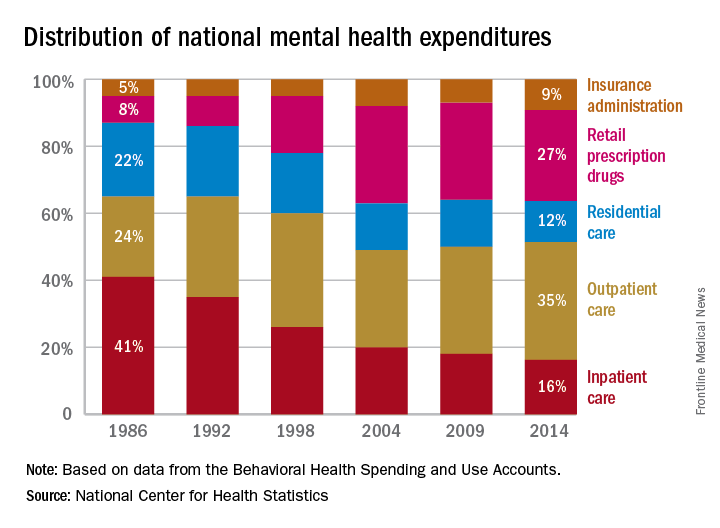Outpatient care represents the largest share of mental health treatment expenditures, and it continues to get larger, while components such as retail drug prescriptions and inpatient care have declined, according to the National Center of Health Statistics.
In 2014, outpatient care took a $65.5-billion slice (about 35%) out of the $186-billion mental health care spending pie, compared with the $51.1 billion (27%) spent on retail drug prescriptions, which was the next-largest portion. Inpatient care was third with $30.3 billion in spending (16% of the total), followed by residential care at $23.2 billion (12%), and insurance administration at $15.9 billion (9%), the NCHS reported in “Health, United States, 2016.”
The distribution of spending has changed considerably since 1986, when mental health expenditures totaled $32.4 billion and inpatient care was the largest share at 41%, outpatient care was 24%, residential care was 22%, retail prescription drugs were 8%, and insurance administration was 5%, according to data from the Substance Abuse and Mental Health Services Administration’s Behavioral Health Spending and Use Accounts.

